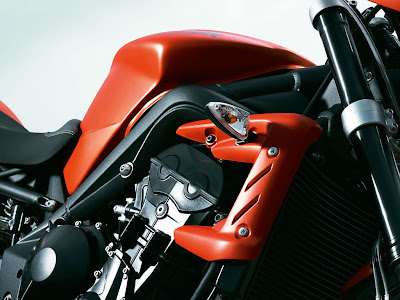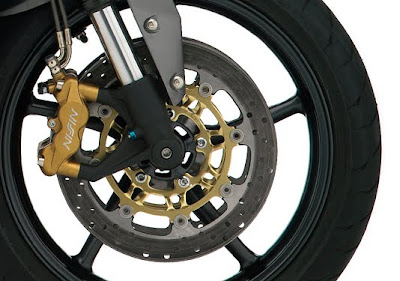2010 Aprilia Shiver 750
Wednesday, December 30, 2009
Internet - Technology of 21st Century

Internet - New Technology is Here
Internet means connects the persons or computers to each other. In the broad meaning Internet is a global system of interconnected computer networks that use a set of protocols called TCP/IP. It is a network of networks that consists of millions of private and public, academic, business, and government networks of local to global scope that are linked by copper wires, fiber-optic cables, wireless connections, and other technologies. The Internet carries a vast array of information resources and services, most notably the inter-linked hypertext documents of the World Wide Web (WWW) and the infrastructure to support electronic mail, in addition to popular services such as online chat, file transfer and file sharing, online gaming, and Voice over Internet Protocol (VoIP) person-to-person communication via voice and video.
In modern age, the Internet is a public, cooperative, and self-dependent service available to millions of people worldwide. Physically, the Internet uses a portion of the total resources of the currently existing public telecommunication networks. Technically, what distinguishes the Internet is its use of a set of protocols called TCP/IP (for Transmission Control Protocol/Internet Protocol).
Difference between Internet and World Wide Web
The terms Internet and World Wide Web are often used in everyday speech without much distinction. However, the Internet and the World Wide Web are not one and the same. The Internet is a global data communications system. It is a hardware and software infrastructure that provides connectivity between computers. In contrast, the Web is one of the services communicated via the Internet. It is a collection of interconnected documents and other resources, linked by hyperlinks and URLs.
Internet - Begin of a era
The origins of the Internet reach back to the 1960s when the America funded research projects of its military agencies to build robust, fault-tolerant and distributed computer networks. This research and a period of civilian funding of a new U.S. backbone by the National Science Foundation spawned worldwide participation in the development of new networking technologies and led to the commercialization of an international network in the mid 1990s, and resulted in the following popularization of countless applications in virtually every aspect of modern human life. The opening of the network to commercial interests began in 1988. The US Federal Networking Council approved the interconnection of the NSFNET to the commercial MCI Mail system in that year and the link was made in the summer of 1989. Other commercial electronic e-mail services were soon connected, including OnTyme, Telemail and Compuserve. In that same year, three commercial Internet service providers (ISPs) were created: UUNET, PSINet and CERFNET. Important, separate networks that offered gateways into, then later merged with, the Internet include Usenet and BITNET. Various other commercial and educational networks, such as Telenet, Tymnet, Compuserve and JANET were interconnected with the growing Internet. Telenet (later called Sprintnet) was a large privately funded national computer network with free dial-up access in cities throughout the U.S. that had been in operation since the 1970s. This network was eventually interconnected with the others in the 1980s as the TCP/IP protocol became increasingly popular. The ability of TCP/IP to work over virtually any pre-existing communication networks allowed for a great ease of growth, although the rapid growth of the Internet was due primarily to the availability of an array of standardized commercial routers from many companies, the availability of commercial Ethernet equipment for local-area networking, and the widespread implementation and rigorous standardization of TCP/IP on UNIX and virtually every other common operating system. As of 2009, an estimated 1/4 of Earth's population uses the services of the Internet.
Growth of Internet
Since 1990 Internet get a climb high in the public. By late 1994 there was growing public interest in the previously academic, technical Internet. By 1996 usage of the word Internet had become commonplace, and consequently, so had its use as a synecdoche in reference to the World Wide Web. Using various statistics, Advanced Micro Devices estimated the population of Internet users to be 1.5 billion as of January 2009.
3G basics
Labels:
21st century,
connectivity,
definition,
Internet,
New technology,
services
Electric car - The new technology of 21st Century
Tuesday, December 29, 2009

Electronic Car - New Wonder of Science
Our world is changing very rapidly in 21st century due to the new inventions of the science. An Electric car is another excited invention of the science. In general term electric car is a car that is powered by electricity. These cars are a specifically a variety of electric vehicle intended for use as a road-going automobile. Electric cars are commonly powered by on-board battery packs, and as such are battery electric vehicles (BEVs). Other on-board energy storage methods that are expected to come into use in the future include ultra capacitors, fuel cells, and a spinning flywheel which stores kinetic energy.
The technology of electronic car is simple. It is an alternative fuel automobile that uses electric motors and motor controllers for propulsion, in place of more common propulsion methods such as the internal combustion engine (ICE). In current time, increased concerns over the environmental impact of gasoline cars, along with reduced consumer ability to pay for fuel for gasoline cars, has brought about renewed interest in electric cars, which are perceived to be more environmentally friendly and cheaper to maintain and run, despite high initial costs. Electric cars currently enjoy relative popularity in countries around the world.
The hybrid electric car is the most popular electronic car form in the world. It has become the most common form of electric car, combining a internal combustion engine power train with supplementary electric motors to run the car at idle and low speeds, making use of techniques such as regenerative braking to improve its efficiency over comparable gasoline cars, while not being hampered by the limited range inherent to current battery electric cars.
Today, Hybrid cars are now sold by most top automobiles manufacturers around the world. Some of the popular electronic car models are the Toyota Prius and the forthcoming Chevrolet Volt, a plug-in hybrid which uses a fully electric drive train supplemented by a gasoline-powered electric generator to extend its range. As of 2009, the world's most popular battery electric car is the REVAi, also known as the G-Wiz, which is produced by an Indian company and sold in a number of countries in Europe and Asia.
Online Store for Car Parts and Accessories
Labels:
auto part,
automobile,
Electric car,
Hybrid car,
Reva car
New Technology - 3G Spectrum
Monday, December 28, 2009

21st Century Technology - 3G Spectrum
The 21st Century Technology 3G is useful in transfer of more information, faster data access and multimedia services through mobile phones. 3G is the third generation of tele standards and technology for mobile networking, superseding 2.5G. It is based on the International Telecommunication Union (ITU) family of standards under the IMT-2000. It's a technology apprehensively expected by mobile users in all over the world.
3G networks enable network operators to offer users a wider range of more advanced services while achieving greater network capacity through improved spectral efficiency. Services include wide-area wireless voice telephony, video calls, and broadband wireless data, all in a mobile environment. Additional features also include HSPA data transmission capabilities able to deliver speeds up to 14.4 Mbit/s on the downlink and 5.8 Mbit/s on the uplink.
Unlike Wi-Fi or WLAN networks, 3G networks are wide-area cellular telephone networks that evolved to incorporate high-speed Internet access and video telephony. Wi-FI networks are short range, high-bandwidth networks primarily developed for data.
Meaning of Spectrum

Radio spectrum refers to a range of radio frequencies. The bandwidth of a radio signal is the difference between the upper and lower frequencies of the signal. For example, in the case of a voice signal having a minimum frequency of 200 hertz (Hz) and a maximum frequency of 3,000 Hz, the bandwidth is 2,800 Hz (3 KHz). The amount of bandwidth needed for 3G services could be as much as 15-20 Mhz, whereas for 2G services a bandwidth of 30-200 KHz is used. Hence, for 3G huge bandwidth is required.
Now you can understand why 3G spectrum has become such a precious and scarce resource in the Technology age - everybody from Media broadcasters to the Mobile companies wants spectrum, and it is in short supply.
Benefits of 3G Technology
3G services will enable video broadcast and data-intensive services such as stock transactions, e-learning and telemedicine through wireless communications in a fast speed. That's why all telecom operators are waiting to launch 3G in India to cash in on revenues by providing high-end services to customers, which are voice data and video enabled.
Problems with 3G
Although 3G was successfully introduced to users across the world, some issues are debated by 3G providers and users:
Expensive input fees for the 3G service licenses.
Numerous differences in the licensing terms.
Large amount of debt currently sustained by many telecommunication companies, which makes it a challenge to build the necessary infrastructure for 3G
Lack of member state support for financially troubled operators.
Expense of 3G phones.
Lack of buy-in by 2G mobile users for the new 3G wireless services.
Lack of coverage, because it is still a new service.
High prices of 3G mobile services in some countries, including Internet access.
Current lack of user need for 3G voice and data services in a hand-held device
History of 3G
The first pre-commercial 3G network was launched by NTT DoCoMo in Japan branded FOMA, in May 2001 on a pre-release of W-CDMA technology. The first commercial launch of 3G was also by NTT DoCoMo in Japan on October 1, 2001. The first commercial United States 3G network was by Monet Mobile Networks, on CDMA2000 1x EV-DO technology, but this network provider later shut down operations. In June 2009, more than 190 3G networks were operating in 40 countries and 154 HSDPA networks were operating in 71 countries, according to the Global Mobile Suppliers Association (GSA).
Technical Complexities of 3G
The technical complexities of a 3G phone or handset depends on its need to roam onto legacy 2G networks. In the first country, Japan, there was no need to include roaming capabilities to older networks such as GSM, so 3G phones were small and lightweight. In most other countries, the manufacturers and network operators wanted multi-mode 3G phones which would operate on 3G and 2G networks (e.g., W-CDMA and GSM), which added to the complexity, size, weight, and cost of the handset. As a result, early European W-CDMA phones were significantly larger and heavier than comparable Japanese W-CDMA phones. The general trend to smaller and smaller phones seems to have paused, perhaps even turned, with the capability of large-screen phones to provide more video, gaming and internet use on the 3G networks, and further fuelled by the appeal of the Apple iPhone.
The Speed of 3G
The ITU has not provided a clear definition of the speeds users can expect from 3G equipment or providers. Thus users sold 3G service may not be able to point to a standard and say that the speeds it specifies are not being met. It is often suggested by industry sources that 3G can be expected to provide 384 kbit/s at or below pedestrian speeds, but only 128 kbit/s in a moving car. While EDGE is part of the 3G standard, some phones report EDGE and 3G network availability as separate things.
Network standardization of 3G
The International Telecommunication Union (ITU) defined the demands for 3G mobile networks with the IMT-2000 standard. An organization called 3rd Generation Partnership Project (3GPP) has continued that work by defining a mobile system that fulfills the IMT-2000 standard. This system is called Universal Mobile Telecommunications System (UMTS).
evolution of 3G Technology
2G networks were built mainly for voice data and slow transmission. Due to rapid changes in user expectation, they do not meet today's wireless needs. Evolution from 2G to 3G can be sub-divided into following phases:
* 2G to 2.5G
* 2.5G to 2.75G
* 2.75G to 3G
The first major step in the evolution to 3G occurred with the introduction of General Packet Radio Service (GPRS). So the cellular services combined with GPRS became 2.5G. GPRS could provide data rates from 56 kbit/s up to 114 kbit/s. It can be used for services such as Wireless Application Protocol (WAP) access, Short Message Service (SMS), Multimedia Messaging Service (MMS), and for Internet communication services such as email and World Wide Web access.
From 2.5G to 2.75G
GPRS networks evolved to EDGE networks with the introduction of 8PSK encoding. Enhanced Data rates for GSM Evolution (EDGE), Enhanced GPRS (EGPRS), or IMT Single Carrier (IMT-SC) is a backward-compatible digital mobile phone technology that allows improved data transmission rates, as an extension on top of standard GSM. EDGE is standardized by 3GPP as part of the GSM family, and it is an upgrade that provides a potential three-fold increase in capacity of GSM/GPRS networks. The specification achieves higher data-rates by switching to more sophisticated methods of coding (8PSK), within existing GSM timeslots. EDGE can be used for any packet switched application, such as an Internet, video and other multimedia.
From 2.75G to 3G
From EDGE networks the introduction of UMTS networks and technology is called pure 3G. EDGE is standardized by 3G as part of the GSM family, and it is an upgrade that provides a potential three-fold increase in capacity of GSM/GPRS networks. The specification achieves higher data-rates by switching to more sophisticated methods of coding (8PSK), within existing GSM timeslots.
3g Security
3G networks offer a greater degree of security than 2G predecessors. By allowing the UE to authenticate the network it is attaching to, the user can be sure the network is the intended one and not an impersonator. 3G networks use the KASUMI block crypto instead of the older A5/1 stream cipher. However, a number of serious weaknesses in the KASUMI cipher have been identified. In addition to the 3G network infrastructure security, end to end security is offered when application frameworks such as IMS are accessed, although this is not strictly a 3G property.
New in Bikes of 2010
Labels:
3g Spectrum,
3rd generation,
drawback,
evolution of 3G,
history,
mobile phones,
New technology
2010 Ducati 848 Sport Bike
Sunday, December 20, 2009
2010 BMW K1300S Wallpapers
Saturday, December 12, 2009
2010 Yamaha YZF-R 125
Friday, December 4, 2009
2010 Yamaha YZF-R1
Tuesday, December 1, 2009
Subscribe to:
Posts (Atom)




















































